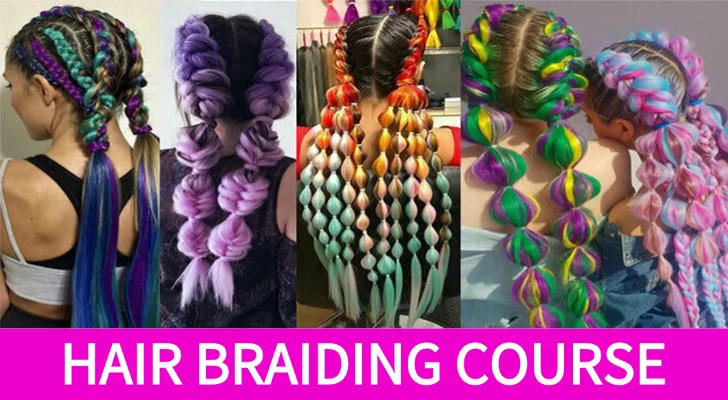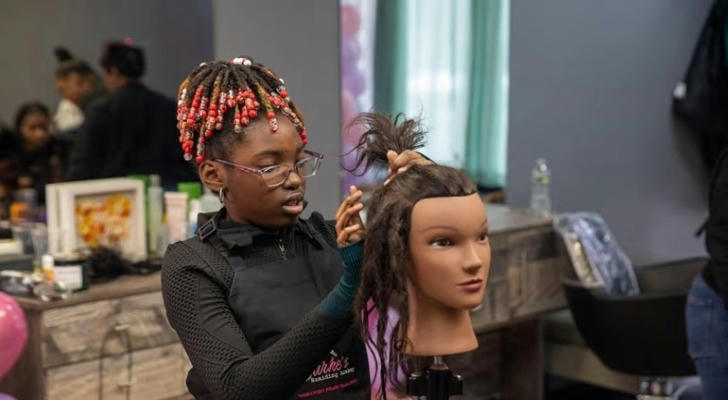Explore American braiding courses: Weaving art, culture and career dreams with your own hands
In the United States, braiding (Braiding) is not only a skill, but also a cultural heritage, an expression of beauty, and a career path that changes your life. Whether you are an artist who loves styling design or you are looking for a new path for flexible employment, braiding courses are worth your understanding. Today, let us take a closer look at American braiding classes to see what it teaches, why it is important, who is learning it, and what you can do after learning it 💇🏽♀️💼.

Ⅰ. What does the braiding course teach? 📚💡
Don't think that braiding is just twisting your hair a few times! A qualified braiding course is rich in content, both hands-on and brain-intensive, mainly including:
🔸 Basic braiding techniques: such as three-strand braids, French braids, Dutch braids, fishbone braids, etc., so that you can quickly master the core techniques.
🔸 Traditional African Hairstyles: Learn cornrows, box braids, twists and other hairstyles with a deep cultural background.
🔸 Scalp and Hair Care: Identify various hair types, learn health care, and avoid the risk of strain and over-tensioning.
🔸 Legal and Professional Knowledge: Including understanding the state's licensing requirements, customer communication skills, service pricing, store opening procedures, etc.
Most courses range from 1-day workshops to 6 weeks, suitable for full-time study or on-the-job training.
Ⅱ. Why are hair braiding courses becoming more and more popular in the United States? 🌍💇🏾♀️
1. Increased cultural identity
With the promotion of the CROWN Act, many states have banned discrimination based on natural hairstyles. People are becoming more and more accepting of hairstyles such as cornrows, locs, and twists. Hair braiding is no longer a marginal aesthetic, but a cultural pride. Mastering hair braiding is not just about mastering a skill, but also about inheriting and respecting a culture.
2. Wide range of employment opportunities
In many states, such as California, Texas, and Florida, hair braiders can engage in non-chemical natural hair services without a cosmetology license. Many courses even teach entrepreneurship knowledge to lay the foundation for those who want to open their own shops. This is a skill that can be quickly monetized. Whether you are a student, a mother, or a worker, you can arrange your work hours flexibly.
3. Social media brings exposure bonus 📱
Hair braiding masters on TikTok and Instagram attract countless fans every year, and innovative braiding styles + personalized accessories lead the trend. Learn to braid hair through systematic courses, plus a little marketing skills, and you may become the next "explosive hairstylist"!
Ⅲ. Case story: Transformation from living room to studio 💪🏾💇🏽♀️

👩🏾🦱 Denise Williams, a young mother from Atlanta, originally made a living by doing odd jobs. She signed up for a 6-week braiding course at a community college, which covered traditional African braiding techniques, scalp care, service procedures, etc.
After graduation, Denise started taking orders from home and gradually accumulated word of mouth and customers. In less than a year, she opened her own natural hair studio in the local area and now employs two full-time braiders. She said:
"The course not only taught me how to braid hair, but also made me understand how to make customers trust you, how to quote prices, and how to make long-term plans."
Her story has also become a role model for many young women in the community to follow, inspiring them to use their skills to create a better life.
Ⅳ. How to choose the right course? 🔍✅
If you want to find the right course, you might as well start from the following angles:
📜 Is it formally certified: Confirm whether the course is offered by the state government, industry association or well-known school.
🏽🏫 Tutor's background: Does he have practical experience? Has he been engaged in it for many years? How are the students' evaluations?
🕒 Is the time arrangement flexible: Full-time, night school, and weekend classes are all available. Choose one that suits your pace of life.
✂️ Is there an opportunity to practice: Learning braiding skills, practice is always more important than watching videos.
🧾 Does it include employment or entrepreneurship support: Some courses come with practical content such as how to charge, how to open a studio, and how to attract customers.
Turn interest into a career and make culture a value ✨
In the United States, braiding courses not only teach you "how to braid hair", but also a door connecting cultural identity, personal skills and career future. Whether you are a novice who is just starting out or a beautician who wants to expand your services, systematically learning braiding can help you go further and stand firmer.
